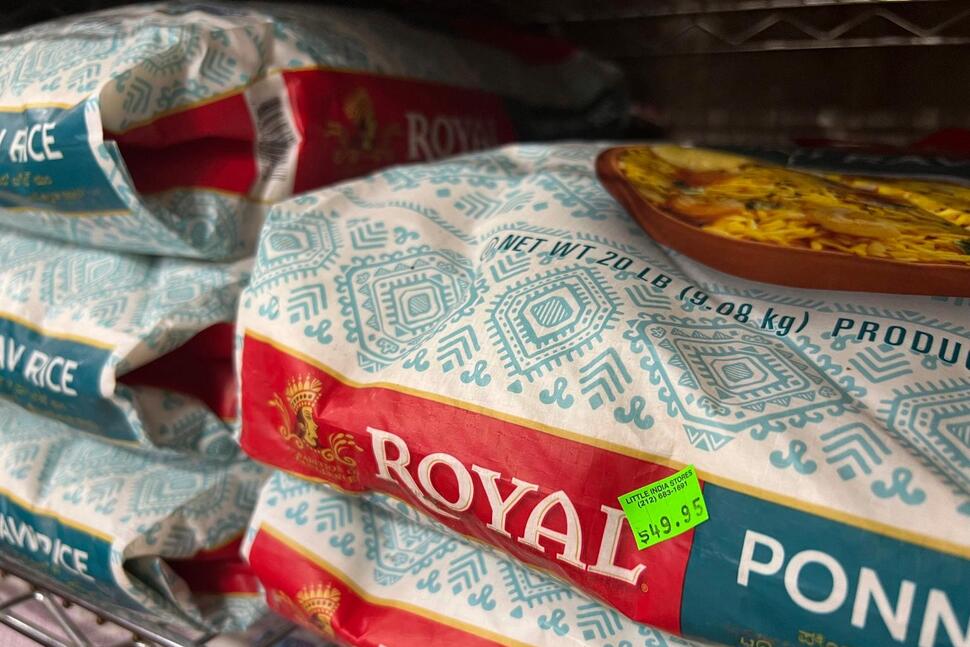NEW YORK (AP) — Chatter on one of Prabha Rao’s WhatsApp groups exploded last week when India announced that it was severely curtailing some rice exports to the rest of the world, triggering worry among the Indian diaspora in the United States that access to a food staple from home might soon be cut off.
As in any crisis situation — think bottled water and toilet paper— some rushed to supermarkets to stock up, stacking carts with bags and bags of rice. In some places, lines formed outside some stores as panic buying ensued.
But Rao, who lives near Syracuse, New York, was reassured when the proprietor of her Indian market sent out an email to customers to let them know there was no need to worry: There was an ample supply of rice.
At least for now.
An earlier than expected El Niño brought drier, warmer weather in some parts of Asia and is expected to harm rice production. But in some parts of India, where the monsoon season was especially brutal, flooding destroyed some crops, adding to production woes and rising prices.
Hoping to stave off inflationary pressures on a diet staple, the Indian government earlier this month imposed export bans on non-Basmati white rice varieties, prompting hoarding in some parts of the world.
The move was taken “to ensure adequate availability” and “to allay the rise in prices in the domestic market,” India’s Ministry of Consumer Affairs, Food & Public Distribution announced July 20. Over the past year, prices have increased by more than 11%, and by 3% over the past month, the government said.
Non-Basmati white rice constitutes about a fourth of the rice exported by India.
“On WhatsApp, I got a lot of messages saying that rice was not going to be available. I think there was a lot of confusion in the beginning because, as you know, rice is very important for us,” Rao said.
“When we first heard the news, there was just mild confusion and people started panic buying because they thought that it may not be available,” she said.
There are scores of different varieties of rice, with people having their preference depending on taste and texture. India’s export ban does not apply to Basmati rice, a long-grain variety that is more aromatic.
The ban applies to short-grain rice that is starchier and has a relatively neutral flavor — which Rao says is preferable in some dishes or favored in specific regions of India, especially in southern areas of the country.
At Little India, a grocery store in New York City’s Curry Hill neighborhood in Manhattan, there was no shortage of Basmati rice and other varieties.
That wasn’t the case at other Indian groceries.
On its Facebook page, India Bazaar, an Indian grocery chain in the Dallas-Fort Worth area, told customers not to panic. “We are working hard to meet all our shoppers’ demands,” the post said.
Customers cleared shelves and waited in long lines to stockpile bags of rice, reported NBC Dallas affiliate KXAS.
“They really wanted to purchase ten, 12, 15 bags,” India Bazaar’s president, Anand Pabari, told the station. “It was a really crazy situation.”
India’s move came days after Russia backed out of a deal to allow Ukrainian wheat safe passage through the Black Sea, prompting warnings that the action could lead to surging prices.
Some economists say the ban might further hurt food supplies around the world, and some governments have urged the Indian government to reconsider the export ban.
At least in the United States, the supply of imported rice from India may not yet be a problem — despite the panic buying — but a long-term ban would certainly deplete that stock.
Roa says she and others will just have to adapt by purchasing rice grown in the United States or imported from other countries.
“I might have to substitute Basmati rice,” she said, “but it doesn’t taste that good, especially with South Indian dishes.”
A U.S. resident for three decades, Rao said she is accustomed to improvising.
“When we first came here, there was not even that much rice from India,” she said. “So I’ve learned to substitute, and I’m fine with the other brands that we get.”
